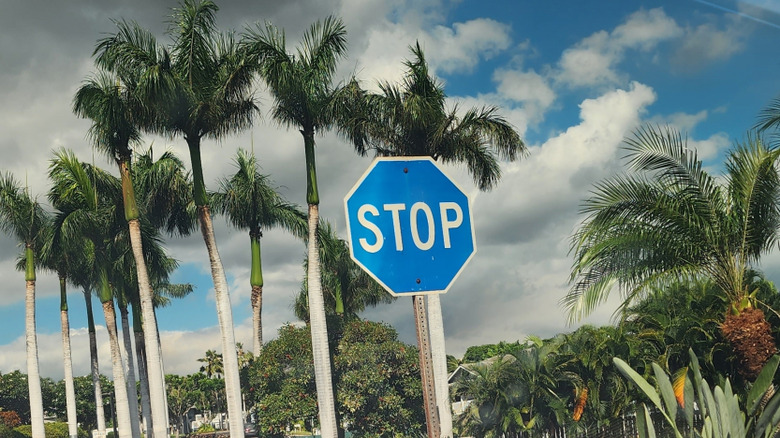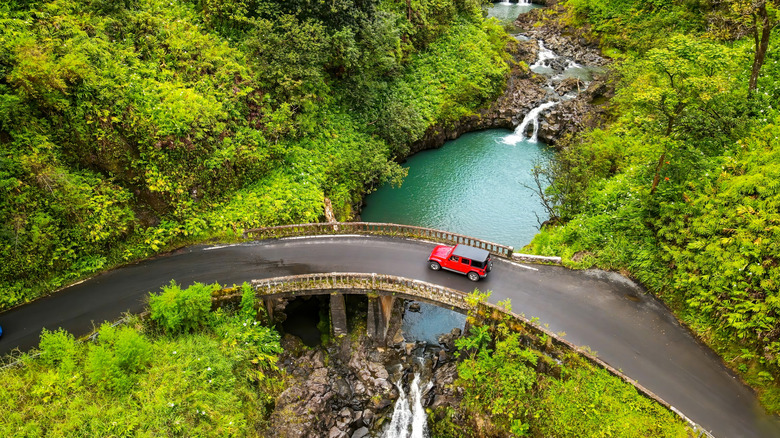What Do Blue Stop Signs Mean And Why Are They All Over Hawaii?
Hawaii is no doubt one of the most epic destinations to visit in the U.S. With beautiful snorkeling destinations, glittering ocean views, and an exquisite seafood-based cuisine, it's a tropical paradise that tourists can't wait to cross off their bucket list. And, while many are expecting to see pristine beaches and palm-tree-lined streets, there are some peculiar things you might see around the islands that will (literally) give you pause, like blue stop signs. You'll find these signs around private properties and neighborhoods. They function the same way as the standard red stop signs, but they are most likely signs that aren't allowed to be on public roads. The blue signage is like a safety feature placed by private property owners.
The red octagonal sign you're used to seeing became mandated in the government's road rules in 1954. In public areas, you will still see the infamous sign, but the contrast between the red and blue signage will indicate when you're passing by private property. The color blue is intentional, and it offers a clear visual distinction that sets private areas apart without confusing them with government-installed traffic signs. In a way, they've become a quirky marker of Hawaii's individuality.
What are the blue stop sign rules?
If you skip all the Hawaii tourist traps that travelers say you should, you might run into the blue stop signs in privately owned areas. So, the question is: Do they function like normal road signs? Some locals say that they don't stop unless they see someone around; however, it's a bit more complicated than that. Since these are privately owned, they aren't federally regulated. So, yes, technically, if you ignore them, you won't get lawfully in trouble, but the residents won't be too happy.
These blue stop signs serve an actual traffic purpose, and just because it's blue doesn't mean it should be ignored — you could still end up in an accident if you do. These signs are as serious as any other when it comes to preventing collisions and respecting private property rules. While you're planning your trip to Hawaii, however, consider this outrageously gorgeous island-hopping route that fits the state's best bits into one epic vacation.

